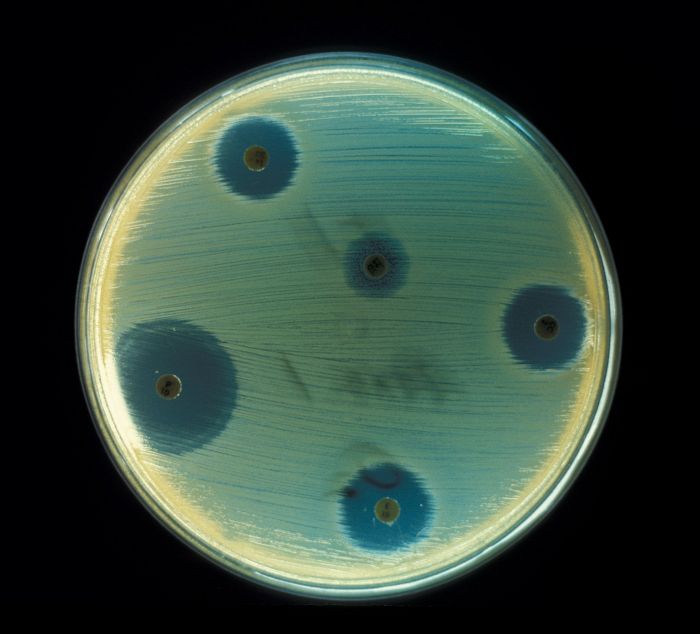Infection diseases have been the curse of all mankind for a long time. Even after it was proved that infections are caused by pathogenic bacteria, for almost a hundred years there were no effective antimicrobial agents.
Medicaments used for treatment were toxic and poorly effective. Only during the 30th years of this century, sulfanilamides were synthesized, and ten years later — antibiotics. Today Canadian Health&Care Mall has various kinds of antibiotics for treating most of the known infections. The invention of these drugs led to the revolution in medicine – for the first time doctors were able to treat infectious diseases effectively.
From the best of motives, to cure more quickly and effectively, doctors prescribed antibiotics to treat every disorder, even if there was no need. But almost immediately unexpected problems appeared: bacteria became resistant to antibiotics, and the patients suffered from side effects (allergies, dysbacteriosis). Partly this has formed various misbeliefs regarding anti-infective drugs.
8 Myths about Antibiotics

Myth №1. All Anti-Infective Drugs are Antibiotics
Although medical literature refers term “antibiotic” to all anti-infective drugs, genuine antibiotics are the medicaments formed by microorganisms or obtained using semisynthetic methods. Besides antibiotics, there are fully synthetic anti-infective drugs (sulfanilamides, nitrofuran drugs, etc.).
Myth №2. Antibiotics can Treat Any Infection Disease
This myth is very common, however, antibiotics can not cure viral and some other infectious diseases. Viral infections constitute a significant part of respiratory diseases. Most so-called “colds” (ARD) do not require treatment with antibiotics or other anti-infective drugs since they are caused by viruses to which these drugs are ineffective.
Antibiotics are also ineffective against such infecting agents as fungi (yeast-like fungi of Candida kind that cause muguent, etc.), Protozoa (amoeba, lamblia), worms.
Myth №3. Antibiotics are Evil, They are Extremely Harmful to the Body and They Mustn’t be Applied
Many people refuse to take antibiotics prescribed by their doctor, even being severely sick. Despite the fact that some antibiotics do have side effects, there are drugs, which are prescribed together with antibiotics as a cover can essentially reduce the risk to cause complications such as allergy or dysbacteriosis. Antibiotics do not build up a tolerance.
Myth №4. Without Antibiotics are Necessary, if It Concerns Patient’s Life and Death
Antibiotics are required for such acute infectious diseases as pyelonephritis, angina, and pneumonia, as well as infection inflammation localized in closed
- cavities;
- otitis;
- sinusitis;
- osteomyelitis;
- abscess and so on.
Very often antibiotics are prescribed to patients after surgery to prevent infections. Canadian Health&Care Mall can supply all the necessary for such cases products online and provide high-quality service.
Of course, prescribing antibiotics, the doctor evaluates indications and contraindications, considering all the expected effectiveness and risks of side effects.
Myth №5. If an Antibiotic Once Helped, It Can Successfully be Used to Treat Other Diseases
Even a very similar in clinical aspect diseases pathogens may be very different. Different bacteria have different sensitivity and resistance to different antibiotics.
One and the same antibiotic may not help even at exactly the same disease of the same person as bacteria quickly adapt to the antibiotics. Learn more facts about antibiotics.
Myth №6. It’s Allowed to Prescribe Antibiotics without Consulting a Doctor
Self-medication with antibiotics is fraught with ineffectiveness due to the wrong choice of a drug, side effects due to inaccurate dosage and lack of adequate cover-drugs, the resistance development of microorganisms to antibiotics due to the untimely cancellation of drug intake.
Dosage depends on the age and comorbidities and does not always correspond to instructions recommended because these recommendations are based on average, not individual parameters.
Myth №7. The Body can Handle Itself
Correctly selected duration of the antibiotic course is important. Very often, patients cancel drugs intake after 1-2 days of treatment as soon as they start to feel better. But the body cannot handle itself, the infection becomes smoldering, complications affecting heart, kidneys, etc. Appear. As a result resistant to antibiotics stock of bacteria may appear.
Myth №8. Anti-Infective Drugs not Related to Antibiotics Have Fewer Side Effects
In some cases, self-medication with sulfanilamides causes allergic reactions or dysbacteriosis even more often than treatment with antibiotics. Besides, many synthetic medications have a toxic effect on the liver and kidneys; microorganisms quickly become resistant to sulfanilamides, and they are less effective than modern antibiotics.
Thus, antimicrobial therapy, including treatment with antibiotics, should be regarded as any other treatment: do not be afraid and apply only under medical supervision, taking into consideration the indications and contraindications.

